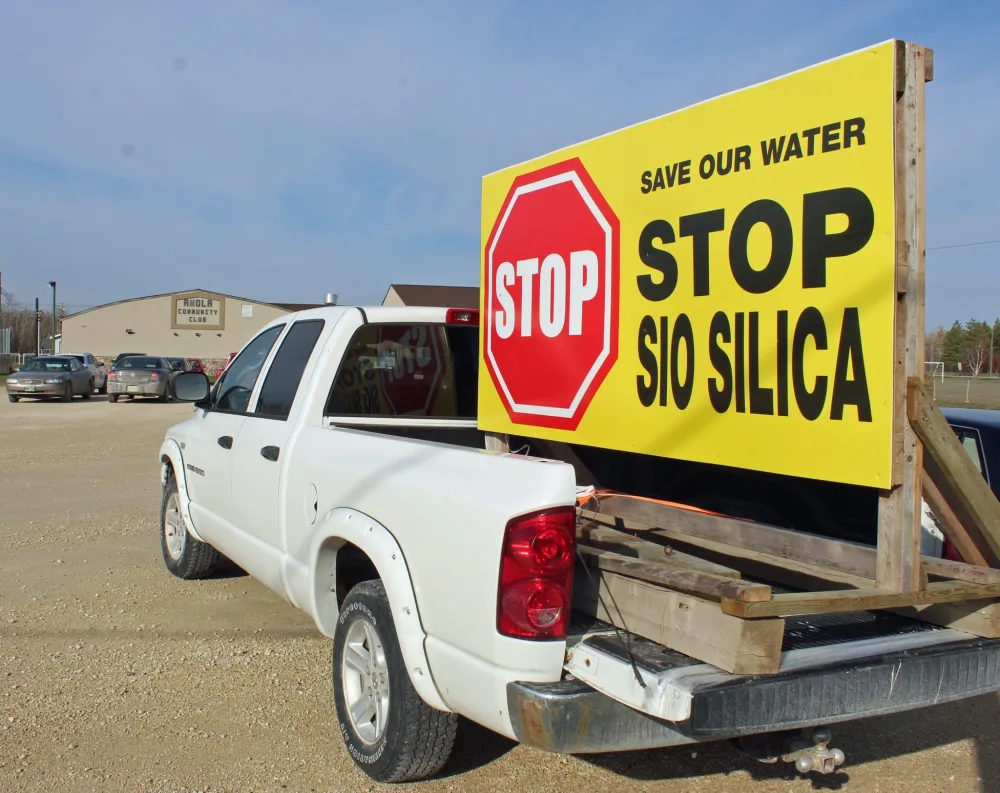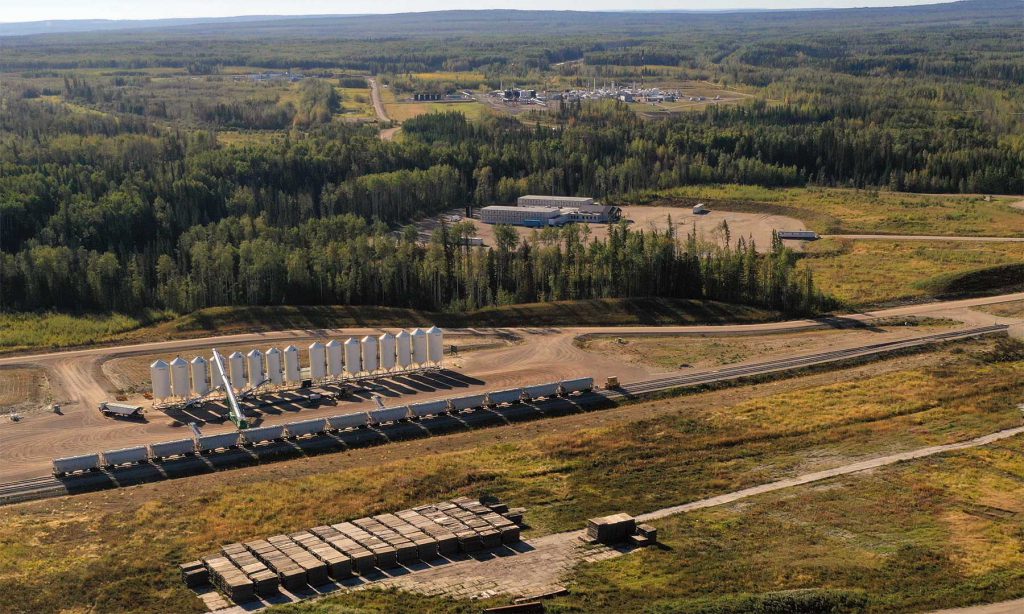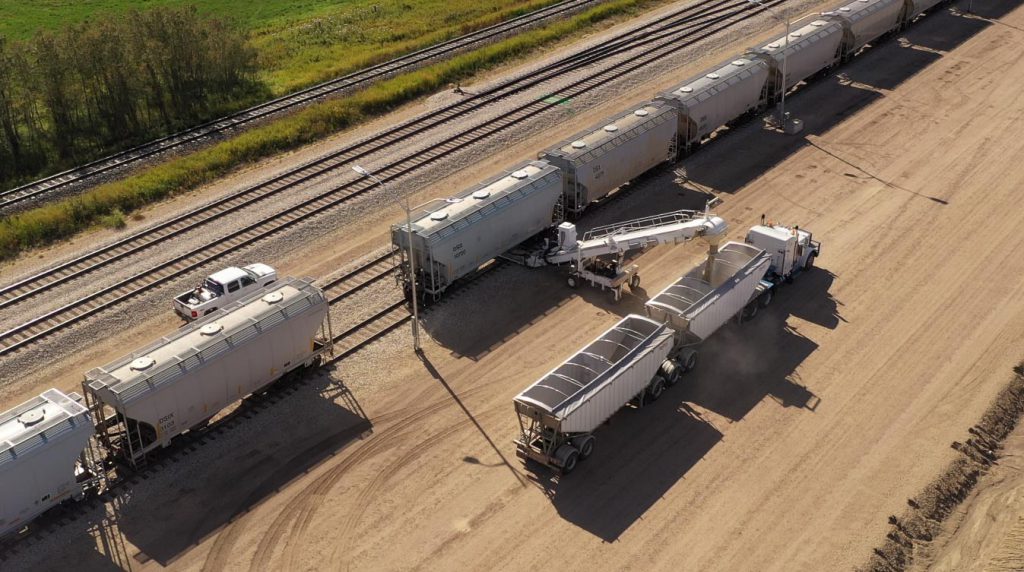
Rules that are not implemented or those that are delayed for years are useless to protect anyone but profit-rapists. And what when those that worship their abusers vote Trump back into power? He’ll immediately undo this to enable his polluter friends.
Biden cracks down on silica dust, a mining health scourge by Hannah Northey, April 16, 2024, Greenwire
The Biden administration unveiled a final mining rule Tuesday that imposes federal limits on silica dust, a carcinogen that threatens miners digging up everything from coal to metals like copper and zinc.
The Mine Safety and Health Administration’s regulations limit the amount of silica dust that workers can inhale during a shift, according to a fact sheet the agency released. Current restrictions on silica exposure are tied to the agency’s coal dust limits.
Silica dust comprises tiny crystals that can reach the deepest parts of the lungs. The dust is churned up by equipment cutting and grinding rock to get to ore or coal seams. Miners exposed to silica over a long time face debilitating and incurable diseases such as lung cancer and silicosis as well as respiratory and kidney diseases. Exposure to silica mixed with coal mine dust can lead to black lung disease.![]() I come from a poor northern European coal mining family with lots of lung disease – it’s horrid to watch silica dust polluted bodies disintegrate.
I come from a poor northern European coal mining family with lots of lung disease – it’s horrid to watch silica dust polluted bodies disintegrate.![]()
“It is unconscionable that our nation’s miners have worked without adequate protection from silica dust despite it being a known health hazard for decades,” acting Labor Secretary Julie Su said in a press release.
In addition to setting exposure limits, the final rule requires mine operators to use engineering tools to prevent overexposure and monitor exposures with dust sampling and environmental evaluations.
Coal mine operators will have a year to comply after the rule is published, while operators of metal and nonmetal mines will have two years.![]() Many will sicken in the meantime and when Trump is re-elected by those who worship their abusers, the rule will be delayed even further or not implemented at all.
Many will sicken in the meantime and when Trump is re-elected by those who worship their abusers, the rule will be delayed even further or not implemented at all.![]()
2024: Arrakis in Frac’d West Texas ![]() Wanna bet frac’ers will be exempt, if the rule is implemented? Oil and gas kills/sickens workers how ever the industry wants, with sometimes a tiny fine in creative sentencing which murderous companies use to their PR advantage.
Wanna bet frac’ers will be exempt, if the rule is implemented? Oil and gas kills/sickens workers how ever the industry wants, with sometimes a tiny fine in creative sentencing which murderous companies use to their PR advantage.![]()
F A C T S H E E T: Mine Safety & Health Administration, United States Department of Labor
Final Rule, Lowering Miners’ Exposure to Respirable Crystalline Silica and Improving Respiratory Protection by U.S. Dept of Labour, Mine, Health and Safety Administration
Overview
To fulfill the Mine Act’s mandate to prevent death, illness, and injury from mining and promote safe and healthful workplaces for miners, MSHA has issued a final rule that reduces ![]() but does not eliminate
but does not eliminate![]() miners’ exposures to respirable crystalline silica and improves respiratory protection for all airborne hazards.
miners’ exposures to respirable crystalline silica and improves respiratory protection for all airborne hazards.
Respirable crystalline silica (also known as silica dust or quartz dust) is a common occupational hazard for coal and metal/nonmetal (MNM) miners.
Silica dust is generated by mining activities, including cutting, sanding, drilling, crushing, grinding, sawing, scraping, jackhammering, excavating, and hauling materials that contain silica. Silica dust also mixes with other dusts created during mining, such as coal dust, to create increased risk of illness and death.
Inhalation of silica dust, a carcinogen, puts miners at risk for developing illnesses that are chronic, irreversible, and potentially fatal, such as:
o Silicosis (acute silicosis, accelerated silicosis, chronic silicosis, and progressive massive fibrosis);
o Non-malignant respiratory diseases (e.g., emphysema and chronic bronchitis);
o Lung cancer; and
o Kidney disease.
Exposure to mixed coal mine dust containing respirable crystalline silica can lead to the development of black lung disease and progressive massive fibrosis.
The final rule reduces the permissible exposure limit (PEL) for silica dust to 50 micrograms per cubic meter (ug/m3) of air; creates an action level of 25 ug/m3; establishes uniform exposure monitoring and control requirements for coal and MNM mines; creates medical surveillance at MNM mines; and updates respiratory protection standards to better protect coal and MNM miners from exposure to all airborne hazards, including silica dust, diesel particulate matter, asbestos and other contaminants.
MSHA will provide compliance assistance to the mining community (including industry and labor) through outreach workshops, virtual or onsite training, and the dissemination of best practice materials. MSHA staff from the Educational Field and Small Mine Services, Technical Support, and Mine Safety and Health Enforcement, working with the National Institute of Occupational Safety and Health (NIOSH), will assist mine operators and miners in implementing the final rule successfully.
Key Changes from the Proposed Rule
Compliance dates extended: The final rule extends compliance dates to provide industry more time to plan and prepare for compliance with the new standards. Coal mine operators will have 12 months after publication, and MNM mine operators will have 24 months after publication to comply with the final rule.![]() I bet the rules will just keep getting extended, and or delayed.
I bet the rules will just keep getting extended, and or delayed.![]()
Exposure monitoring strengthened: Under the final rule, miners’ exposures to respirable crystalline silica will be monitored through recent sampling and qualitative evaluations; the final rule removes the option of using industry-wide objective data or historical sample data. The final rule strengthens periodic evaluations by adding a requirement that mine operators evaluate changes in the mining environment and their effects on miners’ exposure levels.
Medical surveillance updated: The final rule clarifies the timing of voluntary and mandatory medical examinations provided to MNM miners. Additionally, the rule adds a requirement that mine operators ensure that medical providers will submit the results of chest X-rays to NIOSH, once NIOSH’s reporting system is established.
Final Rule
Lowers the PEL for respirable crystalline silica: Under the final rule, the PEL for respirable crystalline silica in MNM and coal mines is lowered to 50 ug/m3 for a full-shift exposure, calculated as an 8-hour time-weighted average (TWA), for all miners. If miner exposures are above the PEL, the mine operator is required to take corrective actions immediately and perform sampling until the exposures are at or below the PEL. In addition, mine operators are required to report all operator samples above the PEL to MSHA so the Agency is
aware of the situation and can work with the mine operator to address the health hazard.
Establishes an action level for respirable crystalline silica: MSHA is also establishing an action level for respirable crystalline silica of 25 ug/m3 for a full-shift exposure, calculated as an 8-hour TWA. When miner exposures are at or above the action level but at or below the PEL, the final rule requires mine operators to conduct periodic sampling until miner exposures are below the action level.
Implements medical surveillance for MNM mines: The final rule requires MNM operators to establish medical surveillance programs under which the operators provide periodic health examinations at no cost to miners. This is similar to the medical surveillance program available to coal miners under existing standards. The new medical surveillance requirements will provide MNM miners with information needed for early detection of respirable crystalline silica-related disease.
Updates the respiratory protection standard: MSHA is replacing its existing respiratory standard with the ASTM International 2019 standard entitled “Standard Practice for Respiratory Protection,” to help protect all miners exposed to respirable crystalline silica and other regulated airborne contaminants. The final rule will better protect miners who wear respirators.
![]()
Refer also to:


2020: Gold Creek reload frac sand rail yard, 35kms south of Grand Prairie. Photos above and below by Will Koop

2012: Mining Corporation Looks to BC for Frac Sand Open Pit Mine
2012: Sand rush: Wisconsin frac sand mining sites more than doubled in past year
